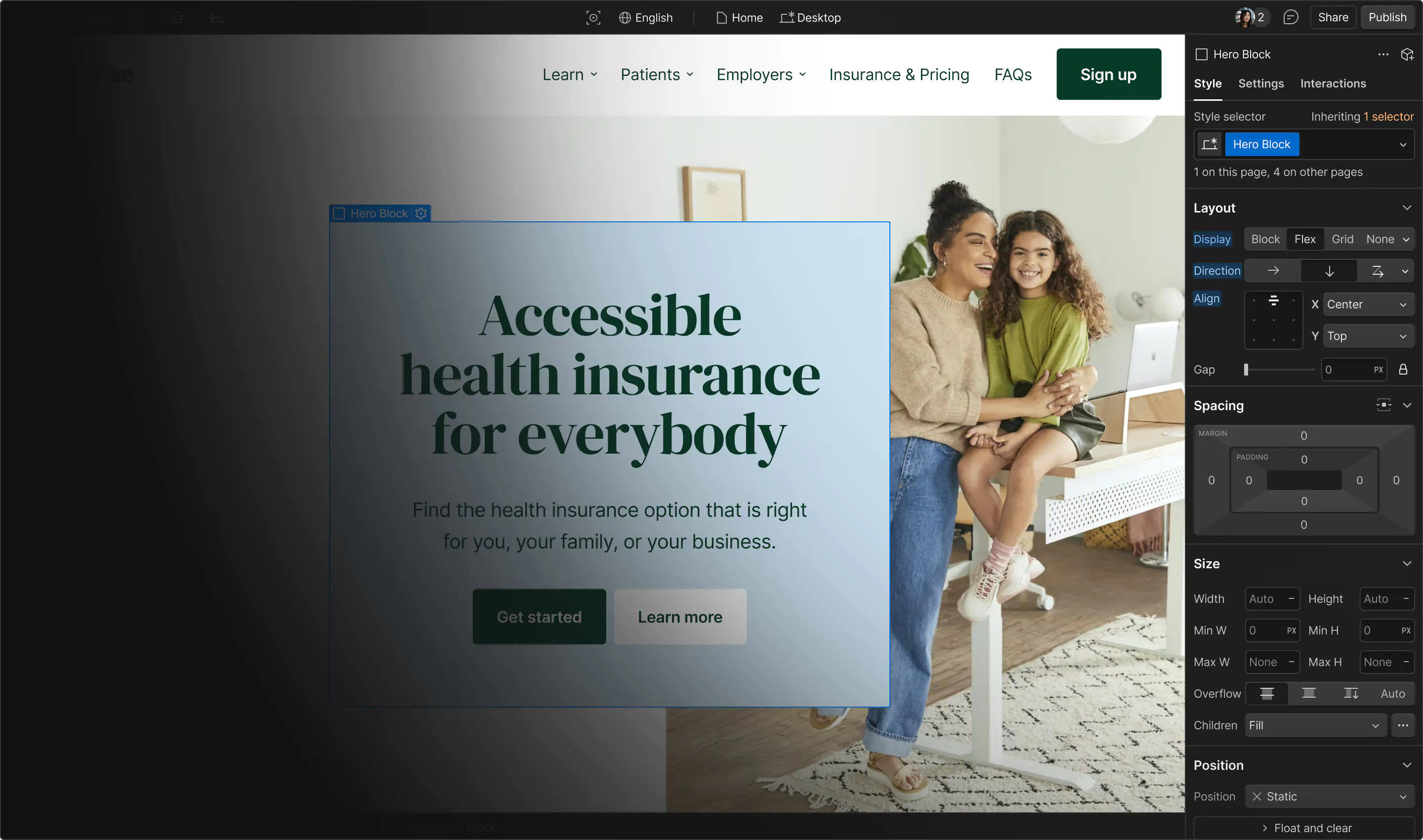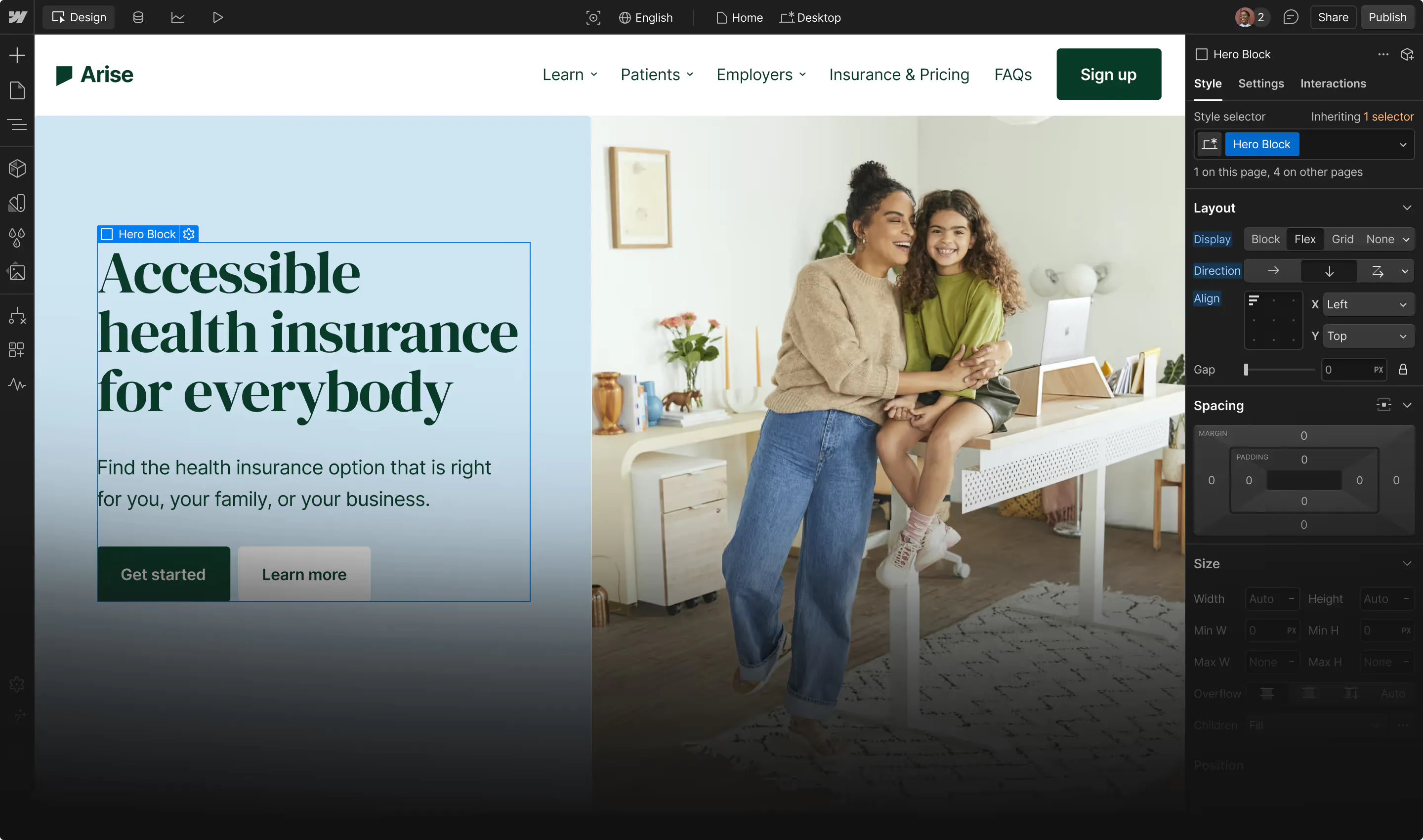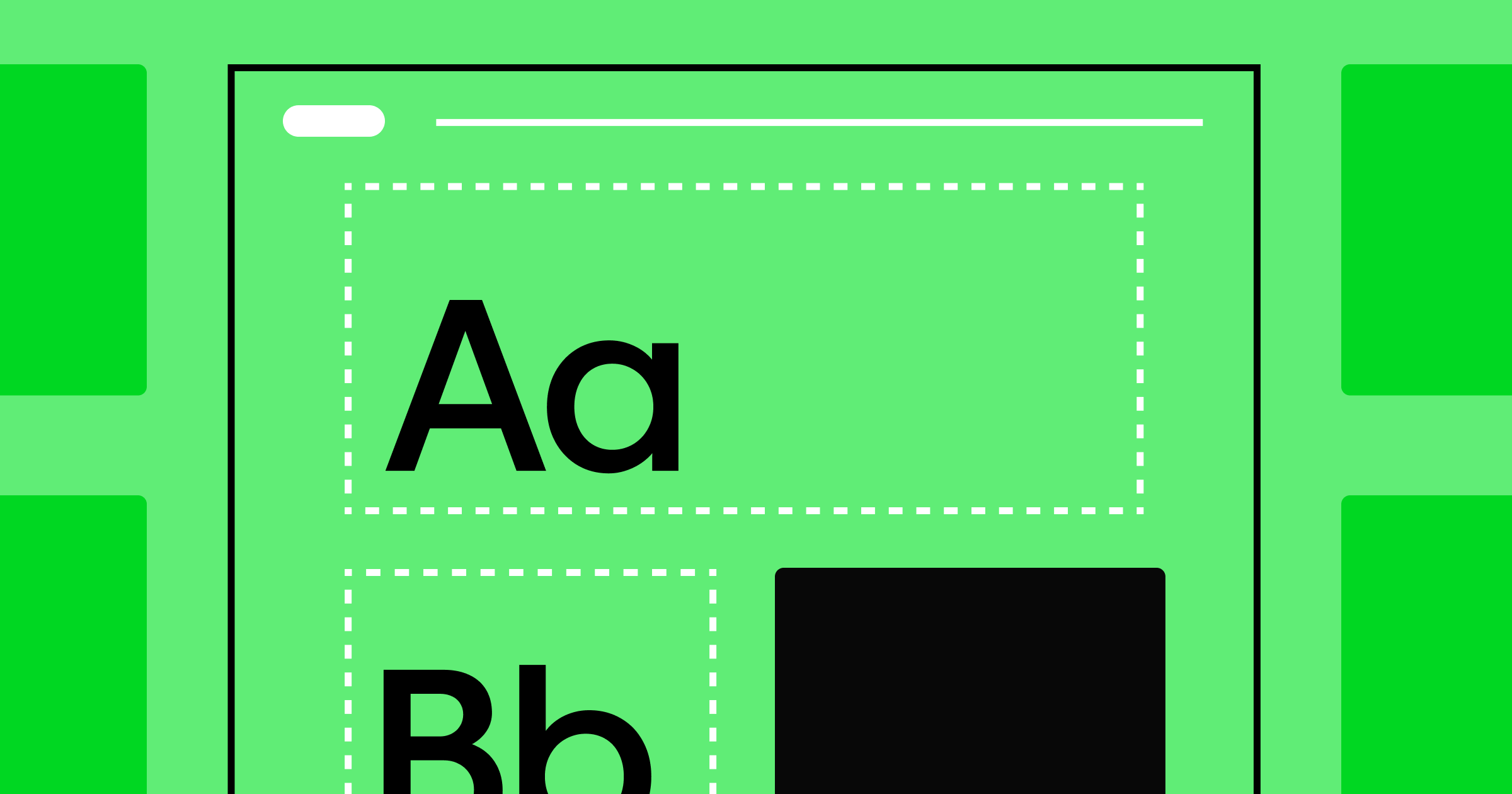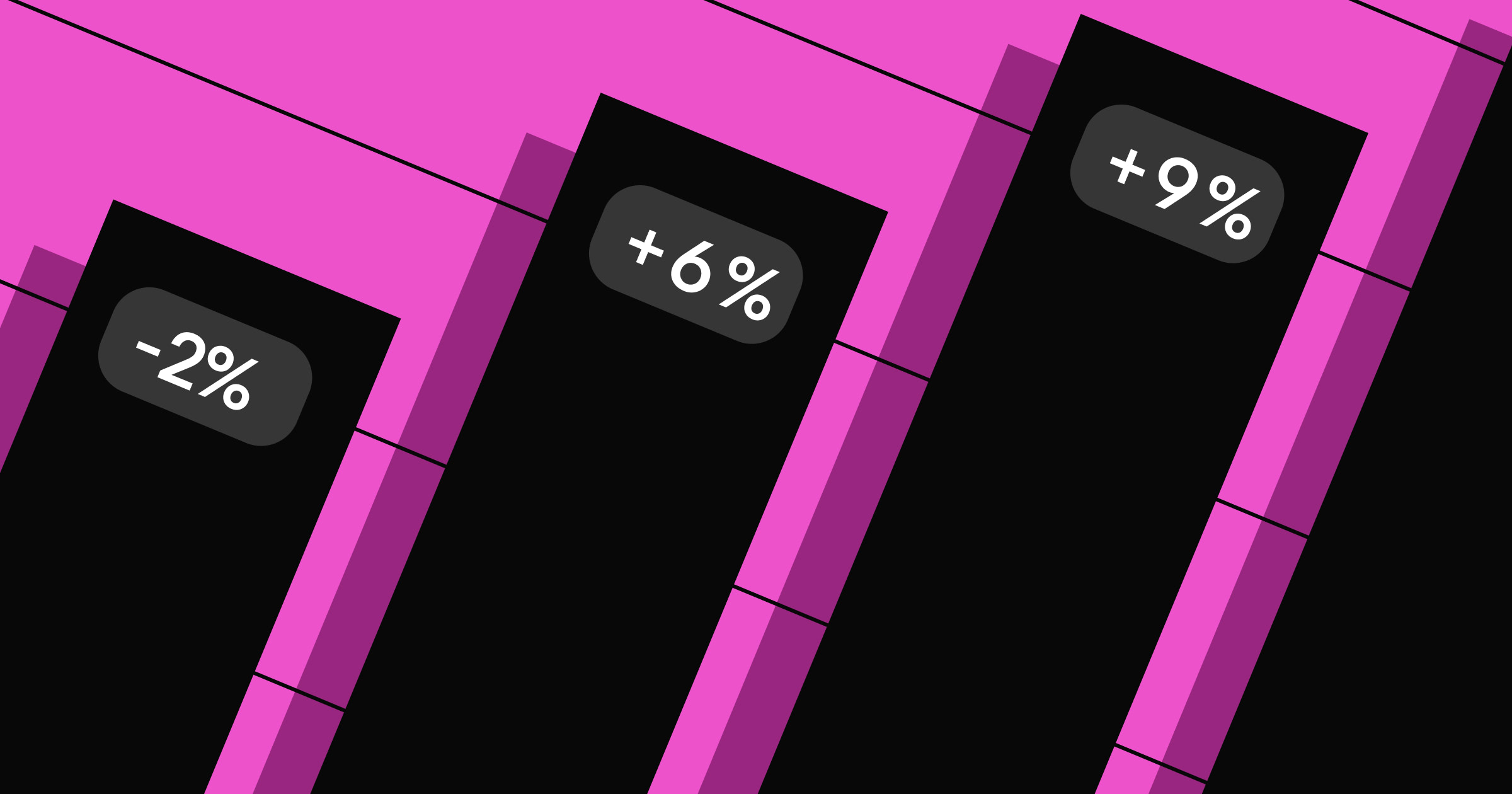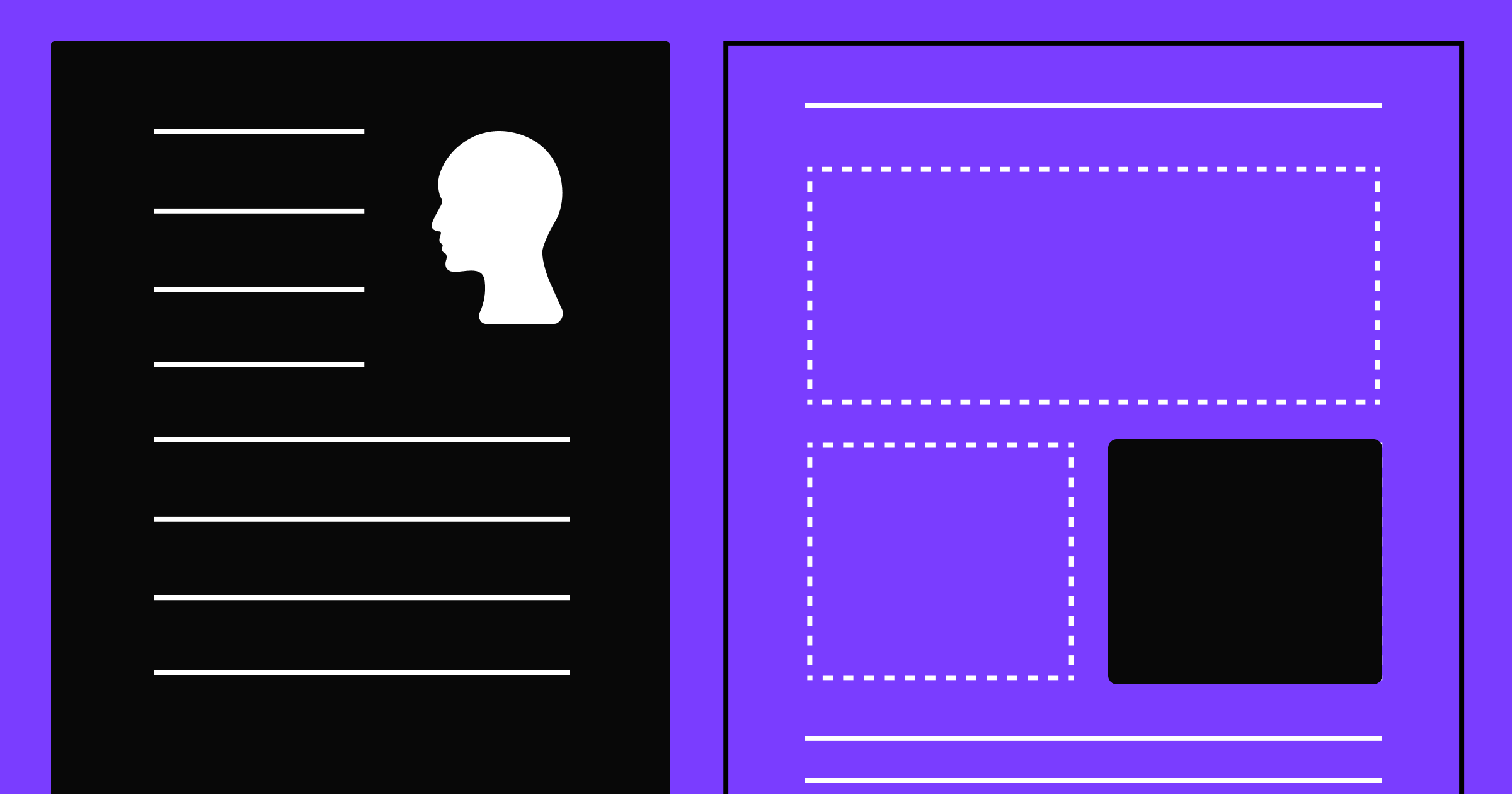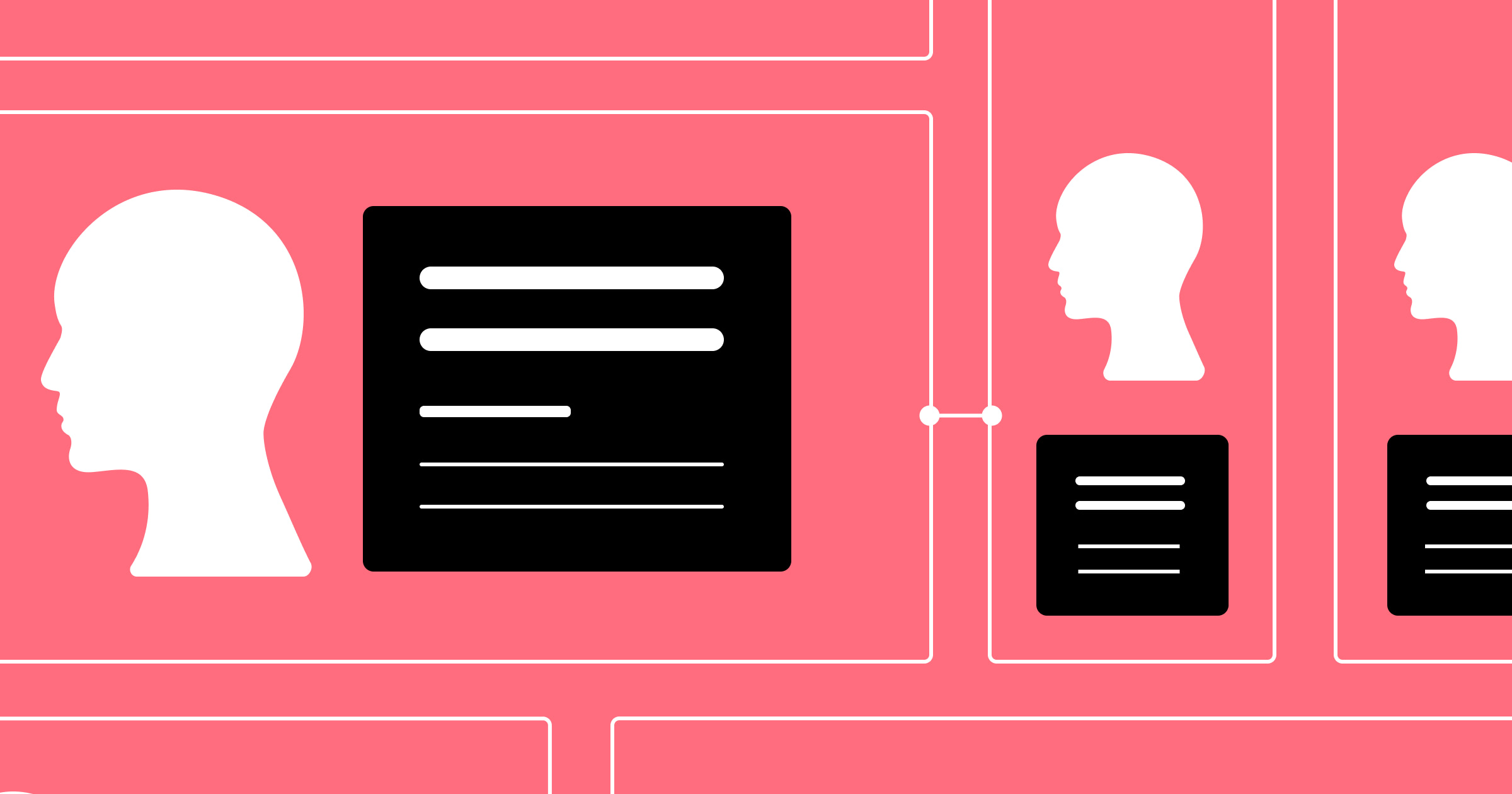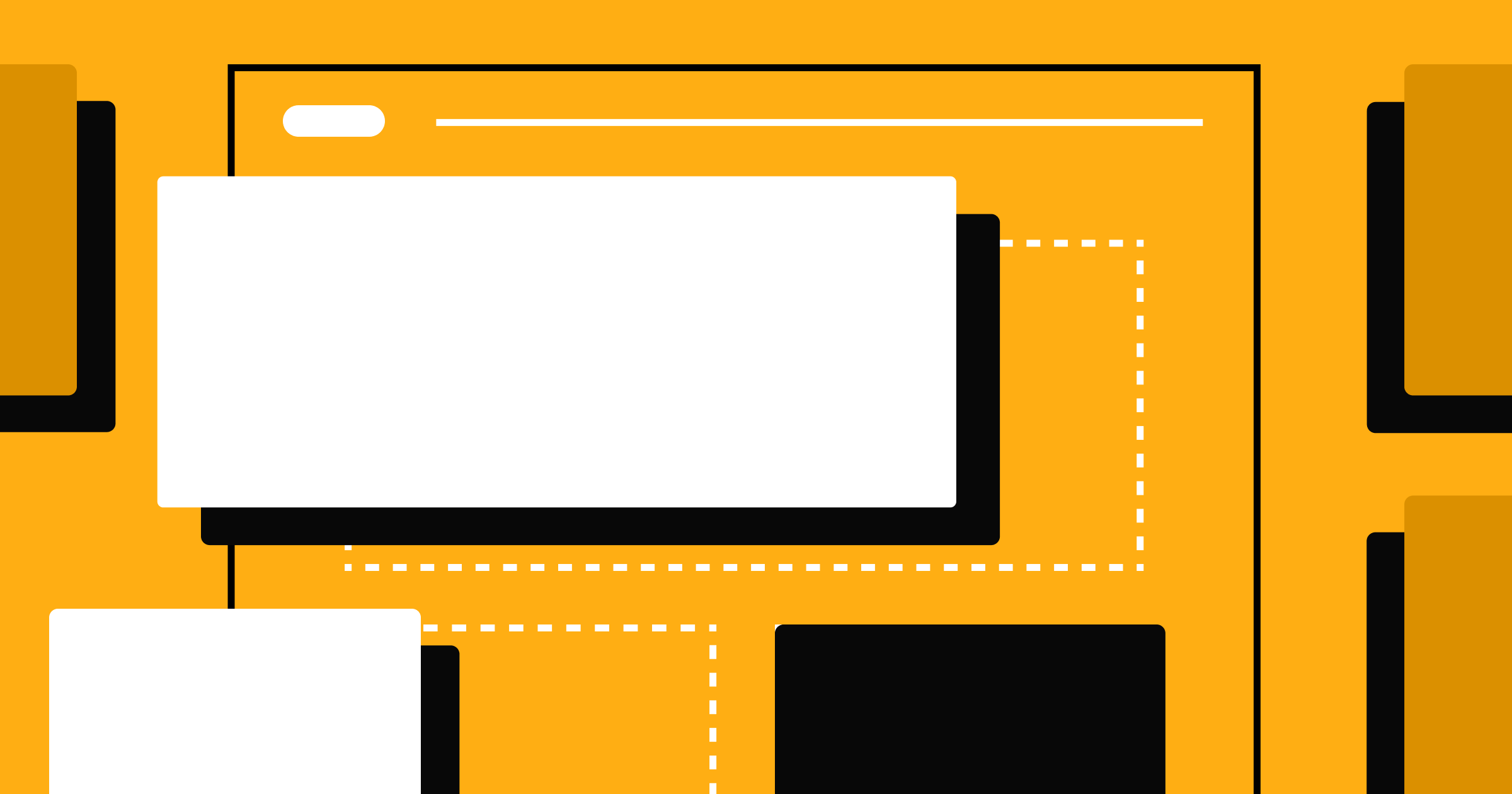As a demand gen marketer, I'm always thinking about ways I can make the journey smoother and more intuitive for my target audiences.
My ultimate goal is to hand off high-quality leads in our ideal customer profile (ICP) to Sales. To do this, I spend a lot of time understanding the needs and pain points of buyers at our target accounts so we can develop content and messaging that resonates with them. If we’re successful, these things work together to bring the right buyers to our website.
But the work doesn’t stop when a buyer arrives on our website. Personalization is the strategy I use to make sure the journey continues once they're there.
Website personalization gives you more control — and influence — over the buyer experience
For enterprise marketers who are used to waiting weeks for site changes, personalization with Webflow Optimize is a dream come true. It lets you have more control over the experience specific buyers have — even when they’re unknown to you. It's also a scalable way to tune a single page to multiple segments.
If you’re not used to this agility, figuring out where to start can be daunting. At Iron Horse, the question we hear most from our enterprise clients is, “How can I make sure we’re using personalization effectively?”
In this article, I’ll walk you through a 3-step framework for incorporating personalization in a meaningful and impactful way. Then I’ll show you a concrete example of how it works.
A framework for creating a high-impact personalization strategy
The easiest way to get started with website personalization is to look for opportunities in your existing buyer’s journey and campaigns.
1. Identify campaign gaps and journey drop-offs
Look at your current marketing efforts and find the places where you're not seeing the results you expect. This could be:
- Low conversion rates on high-traffic landing pages. This usually means the initial pieces of your campaign are working, but something on the landing page isn’t connecting with your audience. In this scenario, it’s important to A/B test messaging, CTA placement, and other aspects of the page structure, but it’s also a prime opportunity to create a more tailored experience for different audience segments.
- High bounce rates from specific traffic sources. Social media’s driving a lot of traffic, but the LinkedIn audience isn’t converting as well as your email audience. Activating those folks can have a big impact on your bottom line.
- Drop-offs at specific points in your buyer journey. Is there a clear point in your funnel where your audience disconnects? Turning a one-size-fits-all experience into something more targeted may make the difference.
- Content that gets consumed but doesn't drive next steps. Making it easy for buyers to find and take the next action after consuming a piece of content can really make a difference in how fast they move down the funnel.
2. Ask whether personalization can help
Webflow’s integrations mean you can think creatively about audience segmentation. For example, you might segment visitors based on intent from your ABM platform, previous engagement from your adtech platform, traffic source, or a specific UTM.
For each opportunity you've identified, ask yourself:
- Could segmenting visitors and serving different experiences help improve this metric?
- What visitor segments could benefit from a different experience here?
- Do I have the data in my martech stack to identify and target these segments?
If you can't answer these questions with confidence, the opportunity might not be right for personalization.
3. Prioritize based on impact and effort
Now that you’re armed with a list of areas where personalization could help, evaluate the ideas in these three areas:
- Impact: Will this directly move the needle on your campaign or company goals?
- Reach: Will this personalization be seen by a significant portion of your target audience?
- Effort: Do you have the data in your martech stack to identify and target the audience segments that will benefit most? How much work will this require from your team and other departments?
The best personalization projects are high-impact, high-reach, and relatively low-effort. After you’ve identified where you want to start, it’s time to get to work.


















Putting the personalization framework into practice
Here is an example of how to use this framework to address a common challenge and increase pipeline velocity.
The challenge: High-value deals going silent
There’s nothing more frustrating than a promising high-value deal that starts with momentum but suddenly hits a wall. When decision makers stop responding to emails and calls, those opportunities can languish in your CRM for weeks or months. These stalled opportunities represent significant untapped revenue potential.
Passive nurture sequences often fall short in these situations. Generic follow-up emails lack the relevance and urgency needed to break through the silence and re-engage dormant prospects.
The solution: Leverage anonymous website activity
Silence doesn't mean disinterest. Even when prospects stop responding directly, they often continue researching your solution behind the scenes. They visit your site, browse your resources, and continue to evaluate your offerings — they're just staying anonymous while they do it.
This presents a unique opportunity to re-engage at exactly the right moment when they're actively consuming your content. By leveraging CRM data in Webflow Optimize, you can create targeted interventions that feel timely and relevant rather than pushy or generic.
How to implement it
Here’s how to identify and reactivate these stalled opportunities:
Step 1: Create the segment. Start by creating a segment within Webflow Optimize of the stalled opportunities in your CRM that have been open for 30 days. (Or whatever length of time works for you.) Then layer in return visitors from these accounts.
Step 2: Create the experiment. Decide what experience you will use to target these visitors and set it up using the page editor. When we did this on our own site, we chose to edit our Hello Bar, but a modal or banner could work as well. You can see the copy we used in the image below. The key is to come up with something that feels right for the user — without being creepy.
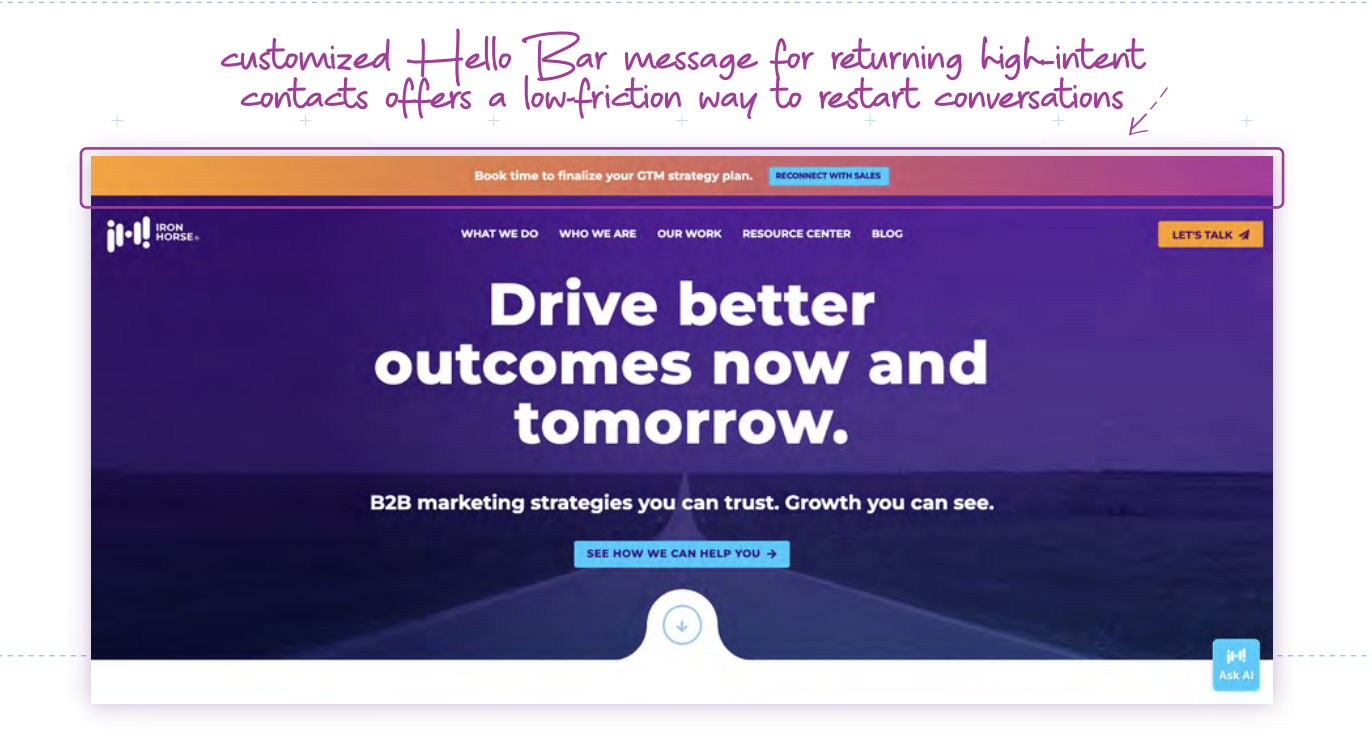
Step 3: Run the experiment. Give it enough time to see trends. KPIs to look for include a lift in the reactivation rate for stalled opportunities and an increase in account velocity to the next stage. Based on what you see, consider these optimizations:
- Try out different copy, button text or colors.
- Use a different personalization experience. If the Hello Bar didn’t produce the results you wanted, a modal or banner still might.
- Experiment with a different CTA. If they’re still not ready to talk to Sales, maybe surfacing a sales enablement asset like a case study, ROI calculator or buying guide, or pointing them to an FAQ, would encourage forward movement.
The results
This strategy delivered measurable impact in two critical areas. First, we saw significant reactivation for opportunities that had been dormant for months, bringing them back into active sales conversations. Second, we accelerated the movement of existing opportunities through our pipeline stages, reducing overall sales cycle time.
This worked because we were treating website personalization not just as a tool for generating clicks, but as a strategic method for reigniting genuine sales momentum. By timing our outreach to coincide with demonstrated interest, we were able to restart conversations that might otherwise have been lost forever.
The bottom line
As you get more comfortable with personalization, you’ll begin to incorporate it more into your campaign planning, the same way you think about ads, nurtures, and other tactics. The goal isn't to personalize everything; it's to personalize the right things in service of the real business outcomes that matter most to you. When you take that approach, personalization becomes a strategic advantage.
If you’re ready to do more with personalization, check out the B2B Website Personalization Playbook for 9 more proven plays for improving marketing ROI and driving sales.
